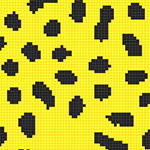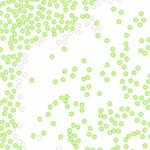Publishing in InDesign
Instructions for Final Chapters, here.Adobe Software
InDesign
- Introduction to InDesign
- Adobe InDesign Learn & Support (Links to an external site.)
- Understanding "Bleed (Links to an external site.)"
- Our book template was designed so that Paragraph Styles (Links to an external site.) control all the type (typeface, weight, spacing, etc) in the document, so that the layout of each student's work is cohesive with all of the others and you can focus on the content of drawings and writing itself.
- Here's advice on working with text and image frames (Links to an external site.), and the way text flows.
- Here's an overview on how to place images (Links to an external site.) into frames.
Photoshop
This is resource includes some good advice about Photoshop's operations and computational controls:
Parisi.David_Photoshop.for.Architects.pdf
Videos:
Illustrator
Adobe Animate
Map Tutorials
QGis
The City of Chicago’s offers open-source access on the City of Chicago's Data Portal
These files are spreadsheets associating objects with graphical coordinates and other information.
To translate them into images you need to process them through software.
QGIS is free and open source.
Learning GIS is a little cumbersome at first, but once you start to grasp how to perform operations on the data, it quickly becomes very powerful for cartography and many kinds of graphical and geographical investigations.
Getting started
QGis Training Manual
QGis for Absolute Beginners
Import Data and Save a Project
What can you do with vector analysis?
Running a "buffer" analysis.
Nodebox Tutorials
NodeBox is a node-based software application for generative design. It's built from the ground up by designers to be easy-to-use, efficient, and fast. NodeBox is developed by the Experimental Media Research Group, a cross-domain research group associated with the Sint Lucas School of arts (Links to an external site.) of the Karel de Grote-Hogeschool (Links to an external site.) (Antwerp, Belgium).
Nodebox
https://www.nodebox.net/node/ (Links to an external site.)
Tutorials home
https://www.nodebox.net/node/documentation/ (Links to an external site.)
Get Started
https://www.nodebox.net/node/documentation/tutorial/getting-started (Links to an external site.)
Explore
https://www.nodebox.net/node/documentation/tutorial/exploring (Links to an external site.)
Animate
https://www.nodebox.net/node/documentation/tutorial/animation (Links to an external site.)
Visualize Data
https://www.nodebox.net/node/documentation/using/data-visualization (Links to an external site.)
Intro Video
https://player.vimeo.com/video/54519434?badge=0 (Links to an external site.)
Intro to Lists
https://player.vimeo.com/video/54523012?badge=0 (Links to an external site.)
Intro to Types
https://player.vimeo.com/video/54523585?badge=0
Rhinocerous / Grasshopper / Generative Landscapes
- Introduction to Rhinocerous
- Introduction to Grasshopper
- Generative Landscapes is an amazing site with elaborate tutorials and open source scripts that might help you develop proficiency using Grasshopper and Rhino
1 – 2D Patterns – Part 1: Grids, Transforms, Culls and Dispatches






2 – 2D Patterns – Part 2 : Attractors and Utility Tools






3 – 2D Patterns – Part 3: Connecting the Dots, Data Structuring, and Tessellation






4 – Surfaces and Topography







5 – Basic 3D operations and working with “Real” Sites
6 – Vectors






7 – Vector Fields with Grasshopper “Field” Components




8 – Basic Recursive Processes






9 – Fractal Forms





10 – Growth Structures






11 – Agent Based Form





12 – Cellular Automata



13 – Space Colonization

20 – Large Scale Landscape Modeling






21 – Case Studies



22 – Artists

Audio Editing
Record and edit audio with Audacity:
http://manual.audacityteam.org/man/tutorial_recording_audio_playing_on_the_computer.htmlAn effective way to download videos you find online:
http://keepvid.com/Extracting audio from online video:
http://ccm.net/faq/1266-extract-audio-from-any-video-using-vlcUsing Audacity with a turntable:
https://wiki.audacityteam.org/wiki/USB_turntablesSplitting a recording into separate tracks using Audacity:
http://manual.audacityteam.org/man/splitting_a_recording_into_separate_tracks.htmlSplitting a recording into separate tracks using Garage Band:
Click to access GarageBand_Splitting_Audio_Tracks.pdfMixing tracks with Audacity:
Audacity for click pop and noise removal:
http://manual.audacityteam.org/man/tutorial_click_and_pop_removal_techniques.htmlVoice remove and isolation:
http://manual.audacityteam.org/man/tutorial_vocal_removal_and_isolation.htmlUsing Ableton to produce a radio show or podcast:
Audio Resources
- Where to find archival audio
- Dissecting a good radio story
- What does a radio script look like?
- How a long audio story is different from a short one
- A blueprint for planning storytelling projects
- Understanding story structure in 4 drawings
- A checklist to organize your story process
- How to inject ‘documentary flair’ into your story
- Be prepared: How a production workflow can help you avert disaster
- Radio Intros: 5 examples of success
- Which mic ? (Mics part 1) (Mics part 2)
- Score! Best practices for using music in audio storytelling
- Reporter two-ways: Improvisation within a structure
- Audio truth killers: an approach to collecting better sound
- How to edit with your ears
- An ear training guide for audio producers.
- Quiz, do you have the ears of an audio producer?
- Audio production FAQ: Headphones, levels, mics and more
- Put your audio to the test: Know when to use it or lose it
- Active sound: How to find it, record it and use it
- Steve Inskeep: Three songs that will change how you write for radio
- Read this before you record ambience in the field
Production Glossary
From NPR
Actuality (n) — The voices in a story that are not the reporter’s/narrator’s. Usually recorded on-location or in a studio interview. Also known as “acts,” “cuts,” or “sound bites.”
Ambience (n) — The pervasive sound at a location. (E.g. Traffic on a road. Doors slamming. Sounds of a demonstration. Birds and wind in a forest.) Can be used as an actuality itself or mixed under narration or other actualities. Also known as “ambi” or “nat sound” or less commonly as “sfx.” [Though, to be clear, ambience is not “sound effects”! It is real sound, not faked.]
Backtime (v) — To determine where to start playing an audio element so that it posts or ends at a specified time. Often used for deadrolls. (See “post” and “deadroll” definitions below).
BEEB (n) — Nickname for the British Broadcasting Corporation.
Bed (n) — Sound running underneath a track or other audio. Not very dynamic – often music or background noise. Common use for ambience.
Butt Cut (v or n) — To place one actuality immediately after another, rather than dividing them with copy or ambience. Often used to create a transition point, reinforce a point or demonstrate a contrast.
Button (n) — A short piece of music that creates a transition between two unrelated stories, or stories with contrasting moods and tone.
Cascade/Waterfall (n) — Type of montage. Three or more distinct pieces of audio combined by fading one into the next.
Clipped (adj) — When audio is missing the beginning or end of a sound element or word. Also known as “upcut.”
Cross Fade (v) — To fade out one sound while fading in another – in order to make the transition seamless. Usually performed in the background, under other tape. When performed in the clear, a cross fade can indicate a transition.
Deadroll (n) — Sound or music that begins inaudibly at a specific time in a mix – so that it will come to its natural end at a specific time.
Dip/Duck (v) — To fade sound underneath a track or other audio that is at a higher volume.
Dub (n or v) — Making a recording of a recording (for example, recording audio from a video).
Establish (v) — After sound (usually ambience) is swept in, to maintain its volume (see “hold/maintain” below).
Fade (in, out, up, down, under) (v) — To adjust the volume of sound from low to high or high to low at a gradual pace.
Fade to black/Fade away (v) — To decrease the volume of a sound until it is inaudible — while still in the clear.
Hit Hot (v) — To begin playing at full volume.
Hit Warm (v) — To begin playing at medium volume.
Hold/Maintain (v) — To keep the volume of an audio element at the same level.
In the clear (adj) — When sound is in the foreground without competition from any other sound. Used for ambience or actualities. (E.g. A reporter’s mixing instructions might say, “Maintain ambi of gunshots in the clear for 4 secs.”)
Mask (v) — To use existing ambient sound to cover over bad edits or to smooth transitions.
Montage (n) — (At right) Several pieces of audio combined sequentially to create a single sound element.
Mult box (n) — A piece of audio equipment that splits one audio signal into many. They are commonly found at press conferences so multiple reporters can record off of a single podium feed.
Nipper (n) — Affectionate nickname for NPR.
Post (v or n) — v: To bring up a sound at a specific point so that it is in the foreground. Used for actualities or ambience. (E.g. “Post ambi after politician says, ‘I’m fighting for you!’”) n:The point at which the sound appears. (E.g. “Hit the post.”)
Pre-produce (v) — To mix or record a piece or interview in advance of a live show. Can be done to facilitate production, if a segment is tight for time or to simplify technical needs.
Rollover (n) — The recorded feeds of a program that occur after the initial live broadcast. The original live show is recorded and then fed again to allow stations flexibility in scheduling. Rollovers are frequently updated to fix mistakes and to add new information.
Room tone (n) — Indoor ambience recorded at the place where an interview is conducted or an event takes place. Usually low dynamic level.
Sneak (v) — To slowly fade up or out.
SOC (n) — Short for “Standard Out Cue.” It’s the ID a reporter gives at the end of a piece. For example, “Nina Totenberg, NPR News, Washington.” (Format varies.)
Split-track (n) — An interview with different audio in the left and right channels. For example, in the field, a producer or engineer might record the host in the left channel and the guest in the right channel. This allows for independent control of levels during production. Split-tracking is a great tool — but audio must be mixed onto both channels, or “summed,” before it can be broadcast.
Sweep (v or n) — To quickly fade up; a quick fade up.
Synch up (v) — To combine two or more pieces of audio so that they line up exactly. Usually done with audio that matches (for example, a tape sync).
Tape sync (n) — A variation of a split-track recording. In the case of an interview, the guest speaks to the host/reporter over the telephone. The producer/engineer goes to the scene and records what the interviewee says (or the guest records him/herself with a smartphone app — see photo). The guest’s side of the conversation is then combined or “sunk” with the host’s side of the conversation. To the listener, it sounds like the host and the guest are in the same room.
Two-way (n; can also be used as a verb) — An on-air conversation between two people, usually a host and an interviewee. Common term used to describe conversations heard on newsmagazines. (A “three-way” is a host and two guests … and so on.)
Track/Voice Track (n) — The reporter’s narrative, read from their script.
Voicer (n) — A news spot involving only the reporter’s voice — no actualities.
Wrap (n) — A news spot featuring an actuality placed between the reporter’s tracks (the actuality is “wrapped” by the tracks).



